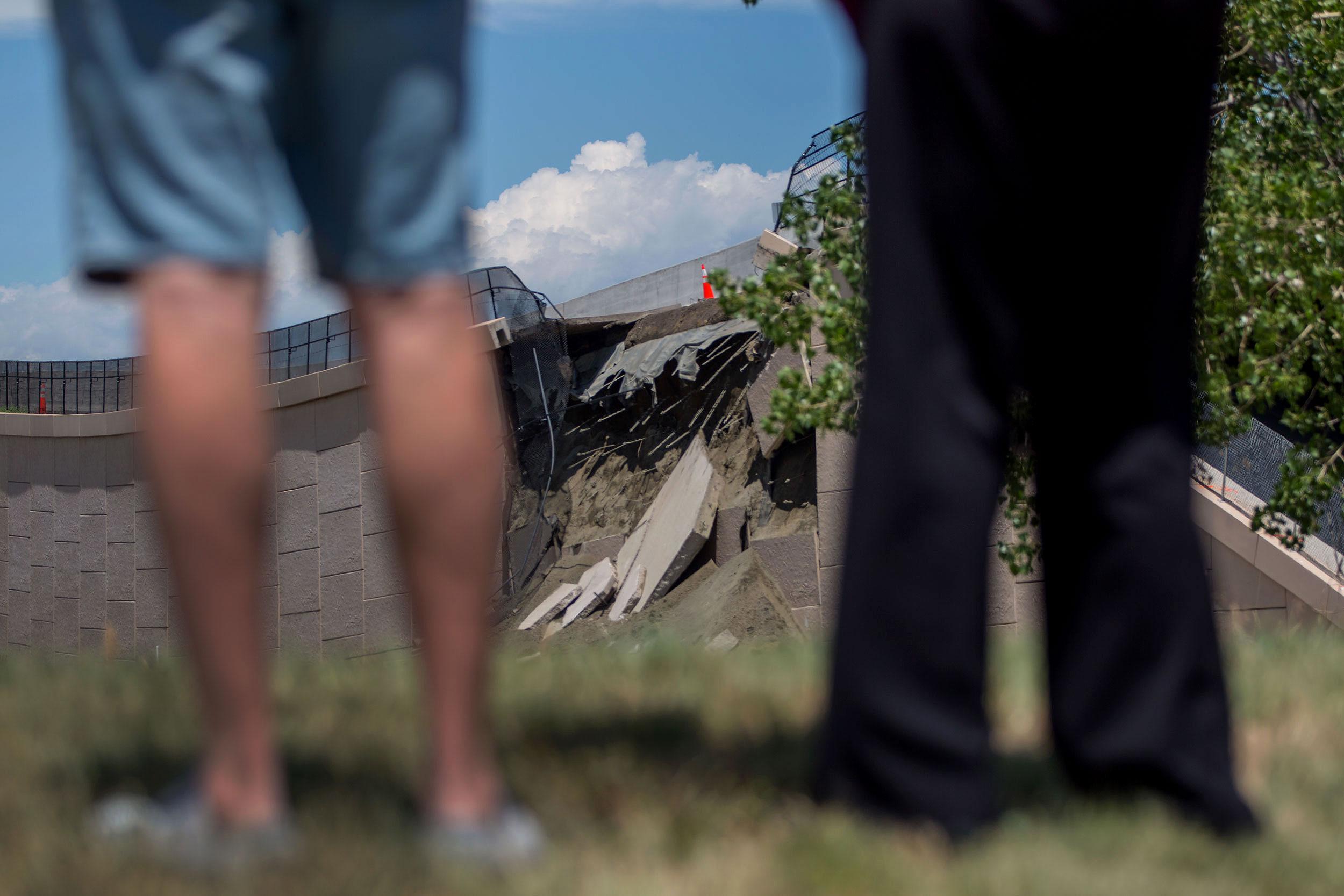
Heavy rainfall and flooding during construction and a poor drainage system contributed to the weakening of clay soil and the eventual collapse in 2019 of a retaining wall that supported U.S. Highway 36 between Denver and Boulder, according to a new independent engineer’s report.
CDOT spent $17.6 million responding to the collapse and repairing the highway, which took months and snarled traffic. Last week, the Colorado Department of Transportation reached a $14 million settlement with a group of construction and design contractors over the collapse.
The report was authored by CTL | Thompson, a Denver-based engineering firm, for the state Attorney General’s office and completed in July. The company has not returned a request for comment. CPR News obtained the report through an open records request.
The 34-page report, with another 280-plus pages of appendices, is a detailed look at how the retaining wall was constructed and attempts to explain why it failed.
The report found that the drainage system was not properly designed and installed and couldn't remove water behind and below the wall. That water eventually penetrated into the clay soil below, weakening it significantly.
“This ultimately resulted in global stability failure,” the report’s authors write.
The report also suggests that heavy rain in September 2013, which led to devastating flooding across the northern Front Range, fell on the wall’s construction site and “caused erosion and infiltration.”
CDOT chief engineer Steve Harelson said he “would not pin this on the 2013 floods completely.” It’s possible that nearby groundwater was pulled into the clay, he said, which would have the same effect of weakening the soil.
The report’s conclusion — that water weakened the soil and led to the collapse — confirmed CDOT’s own analysis of the failure, Harelson said.
The collapse has provided a lesson for CDOT, Harelson said. The agency had used a “design-build” contract for the U.S. 36 expansion project that included the retaining wall, a contracting mechanism that can save the agency dollars by farming out the design to the private sector. Companies try to come up with innovative designs to save money and make a profit.
“I think the lesson might be to just take a more critical eye when we're reviewing those design-build documents and make sure that their innovation is not taking on too much risk,” he said.
CDOT has been monitoring the rest of the retaining wall and it “hasn’t moved a millimeter,” Harelson said, calling the collapse a “one-off.” He said he was grateful the construction and design firms ultimately took responsibility.









